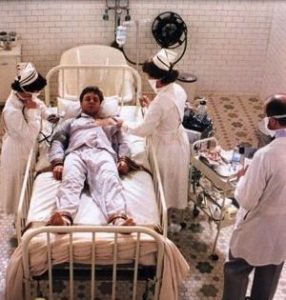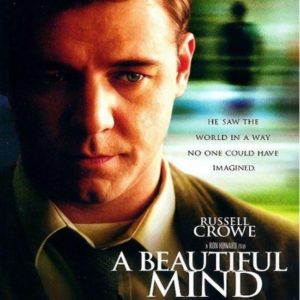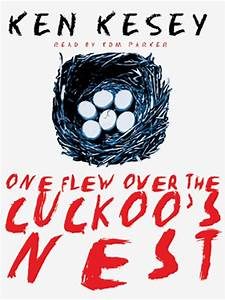Introduction
The 2001 film, A Beautiful Mind, focuses on the brilliant mathematician John Nash who struggles to find himself due to the diagnosis of a severe case of schizophrenia. Nash was labeled an outcast and many didn’t associate with him because of his hallucinations and paranoia. Despite his educational status at a prestigious university, many questioned his genius work because of his condition. Nash’s worsening case of paranoid schizophrenia throughout the movie requires a treatment identified as electroshock therapy. Nash was sedated with anesthesia before electrodes were applied to his scalp, allowing an electric current to develop and create seizures on his brain. Dr. Rosen said, “Imagine if

you suddenly learned that the people, the places, the moments most important to you were not gone, not dead, but worse—had never been. What kind of hell would that be?” Nash’s doctor is describing Nash’s experience with having schizophrenia and how it has negatively impacted his life.

One in five people are affected by some sort of mental health condition (Canady, 2016). One of the most widely recognized mental disorders is schizophrenia, a chronic brain disorder that affects 1.2% of the population. Although diagnosis and understanding of the disease has expanded immensely since the early 1900s, nearly 3.2 million people have the condition and don’t receive treatment (Lane, 2016). People who suffer from schizophrenia may have symptoms of hallucinations, delusions, and disordered thinking and behavior. There is no cure for schizophrenia, so effective treatment is essential for this disease.
In the 1930’s, camphor oil1 injections were used to induce seizures (Keuneman, Weerasundera, & Castle, 2002). Seizures were induced into the brain to alleviate the symptoms the disease produced. Brain seizures were thought to reverse the symptoms and cure the disease. The concept of electroshock therapy was introduced by L. Von Meduna in January 1934 in Hungary. Ugo Cerletti and Lucio Bini were inspired by Meduna and replaced the use of cardiazol2 with electricity to provoke epileptic seizures (Fablet-Vergnaux, Loirat, & Vanelle, 2003; Phutane, Thirthalli, Kesava

n, Kumar, & Ganhadhar, 2011). Cerletti was the first to use electroshock therapy on humans in Italy in 1938 (Kleinerman, 1947). The concept broadened in the 1940’s to treating other diseases, while the following decade saw the declining use of ECT (Keuneman, Weerasundera, & Castle, 2002). Newly successful antipsychotic medications, such as chlorpromazine, haloperidol, and flupentixol, greatly reduced the use of ECT. Along with the new medications, a novel came out that ruined the reputation of the treatment. Ken Kesey’s novel, One Flew Over the Cuckoo’s Nest, described mental ill patients receiving the treatment. The novel was later made into a movie in 1975, and showed the patients terrified and in pain from the gruel treatment (McGoldrick, 2010). In the 1970’s, it was re-acclaimed for treatment-resistant schizophrenia (TRS). The name changed from electroshock therapy to electroconvulsive therapy when it made its come-back. Electric shock techniques were altered and showed positive results, which triggered the new name. The following decade to present time has shown a substantial advantage in short-term therapeutic outcome (Phutane, Thirthalli, Kesavan, Kumar, & Ganhadhar, 2011). Kleinerman was a senior medical officer at Saint Elizabeth’s Hospital. He was also an instructor of clinical psychiatry at Georgetown University’s School of Medicine, in Washington, D.C. Writing in 1947, Kleinerman claimed, “It has definitely established its place in the therapeutic armamentarium3 of the psychiatrist” (p. 299). The continued use of the procedure, along with updates over time, indicates his observation remains relevant. Backing up that thought, an article says, “ECT does have a clear and increasingly recognized role” (Keuneman, Weerasundera, & Castle, 2002, p. 385).
Definitions obtained from Google and Dictionary.com.
[1] Camphor oil was made by distilling bark and wood of a camphor tree. Today, it is chemically manufactured from turpentine oil. Camphor stimulates nerve endings to relieve symptoms, such as pain and itching, when applied to skin.
[2] Cardiazol is a powerful convulsant agent that proved to be more effective and acted faster than camphor oil.
[3] Armamentarium is the complete equipment of a physician or medical institution. All the means available for professional practice.
